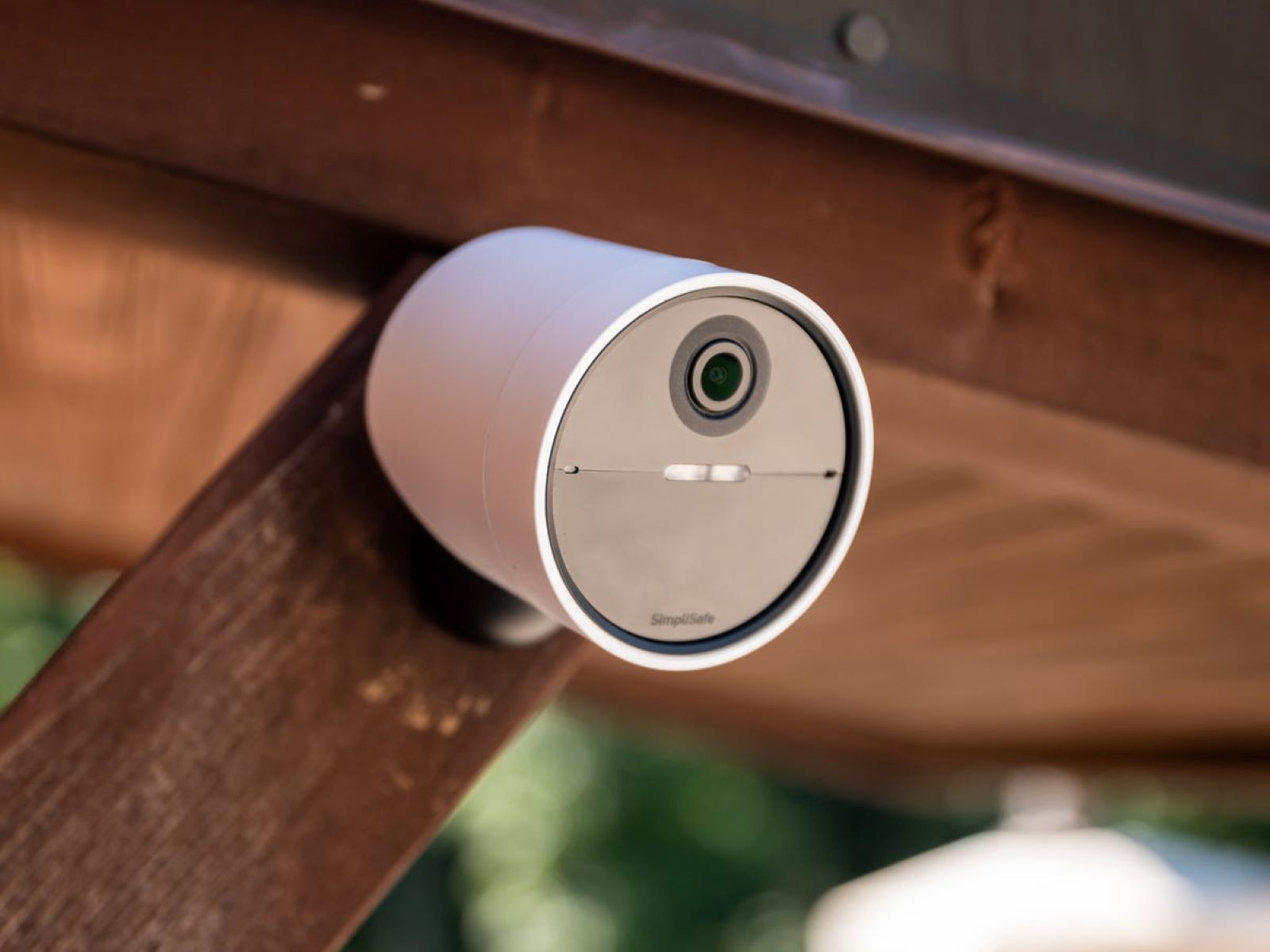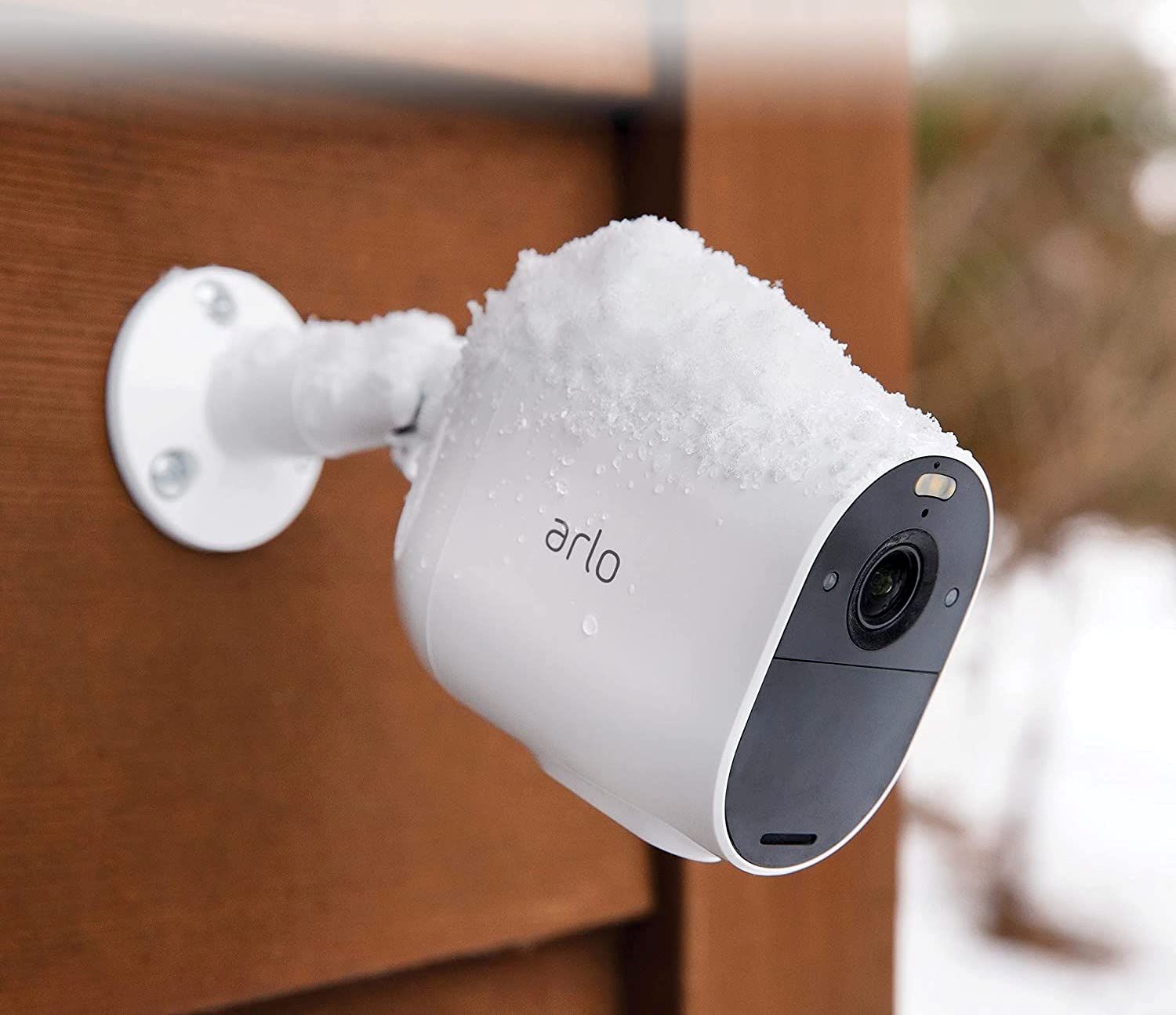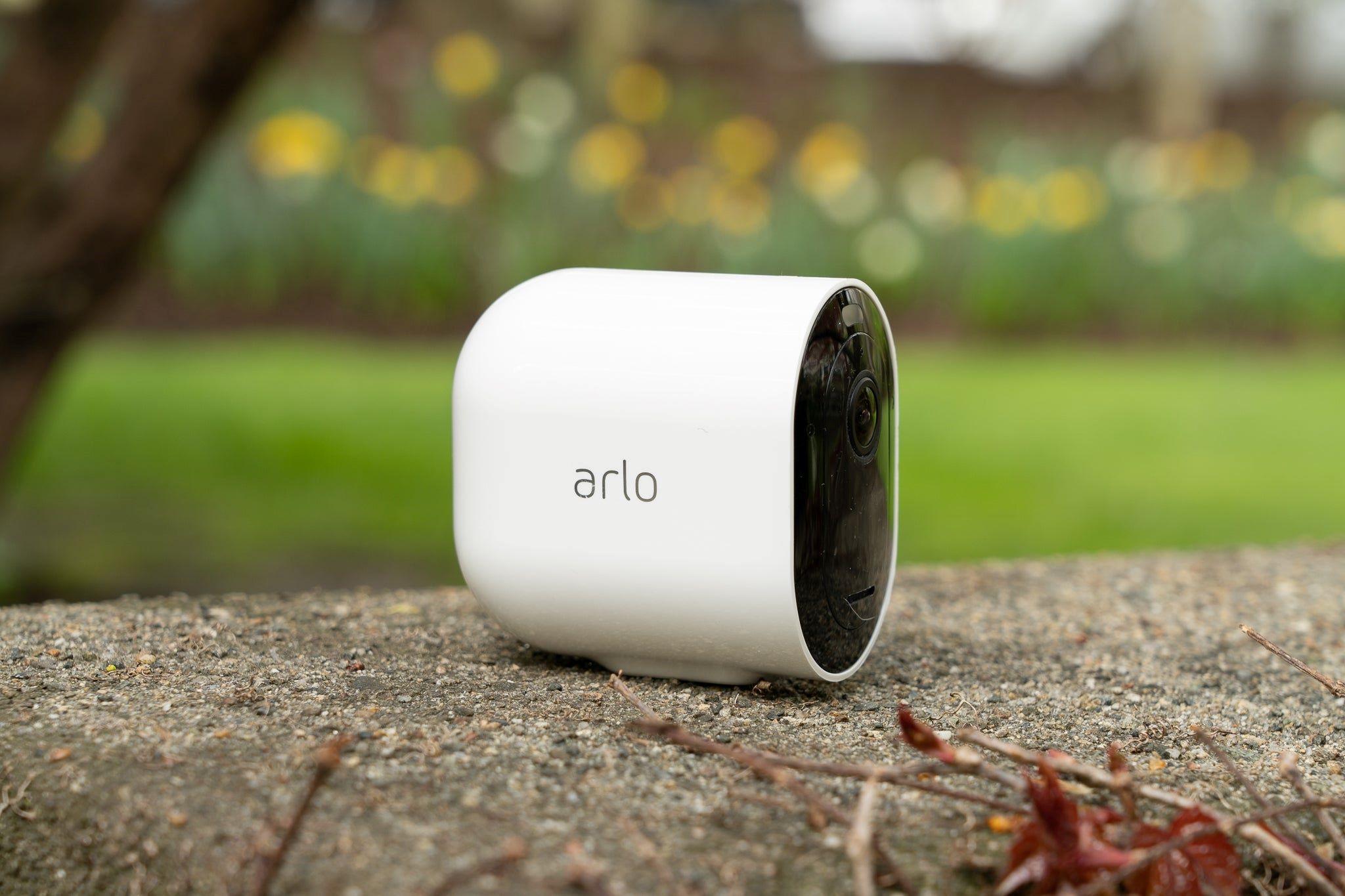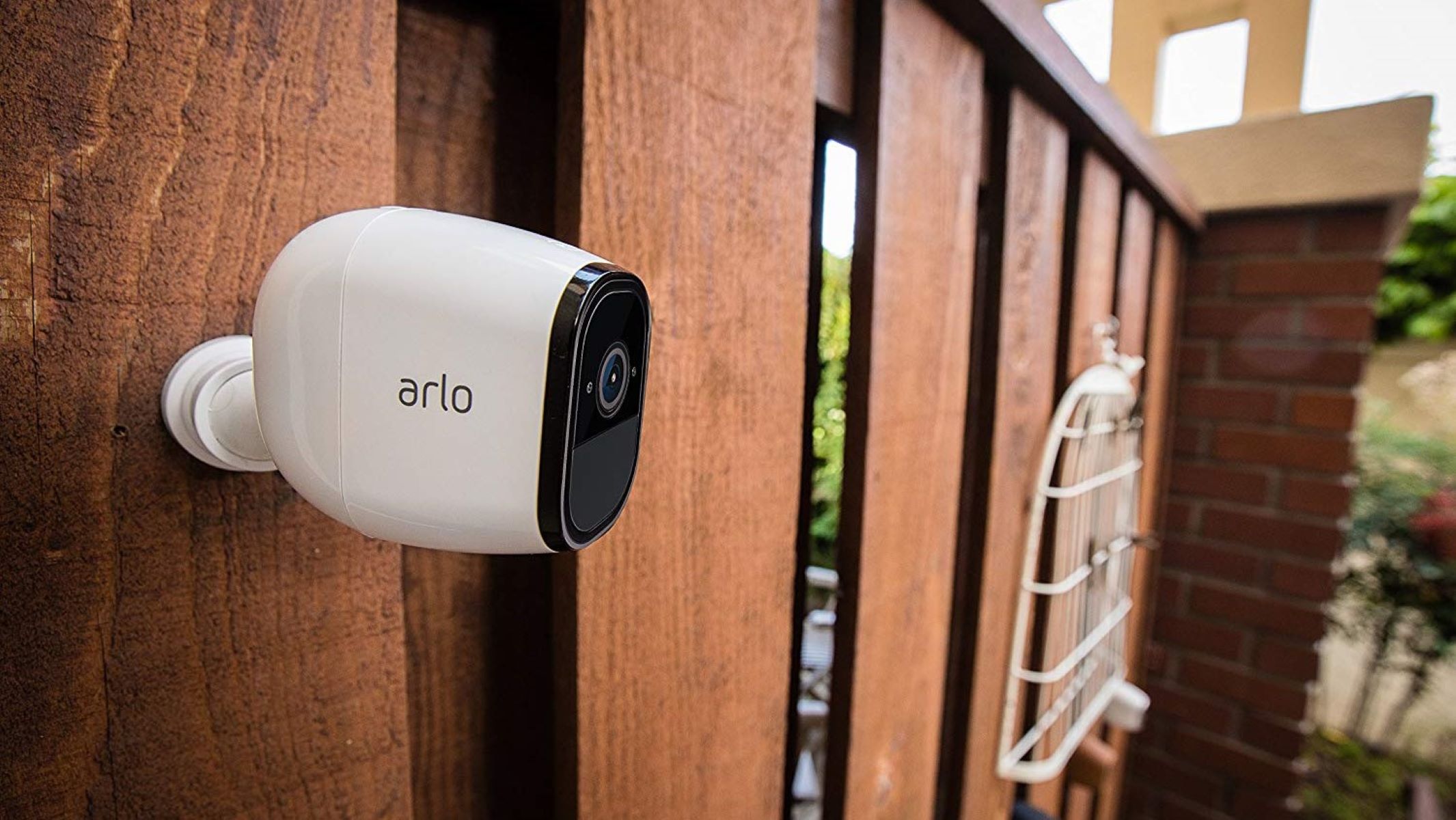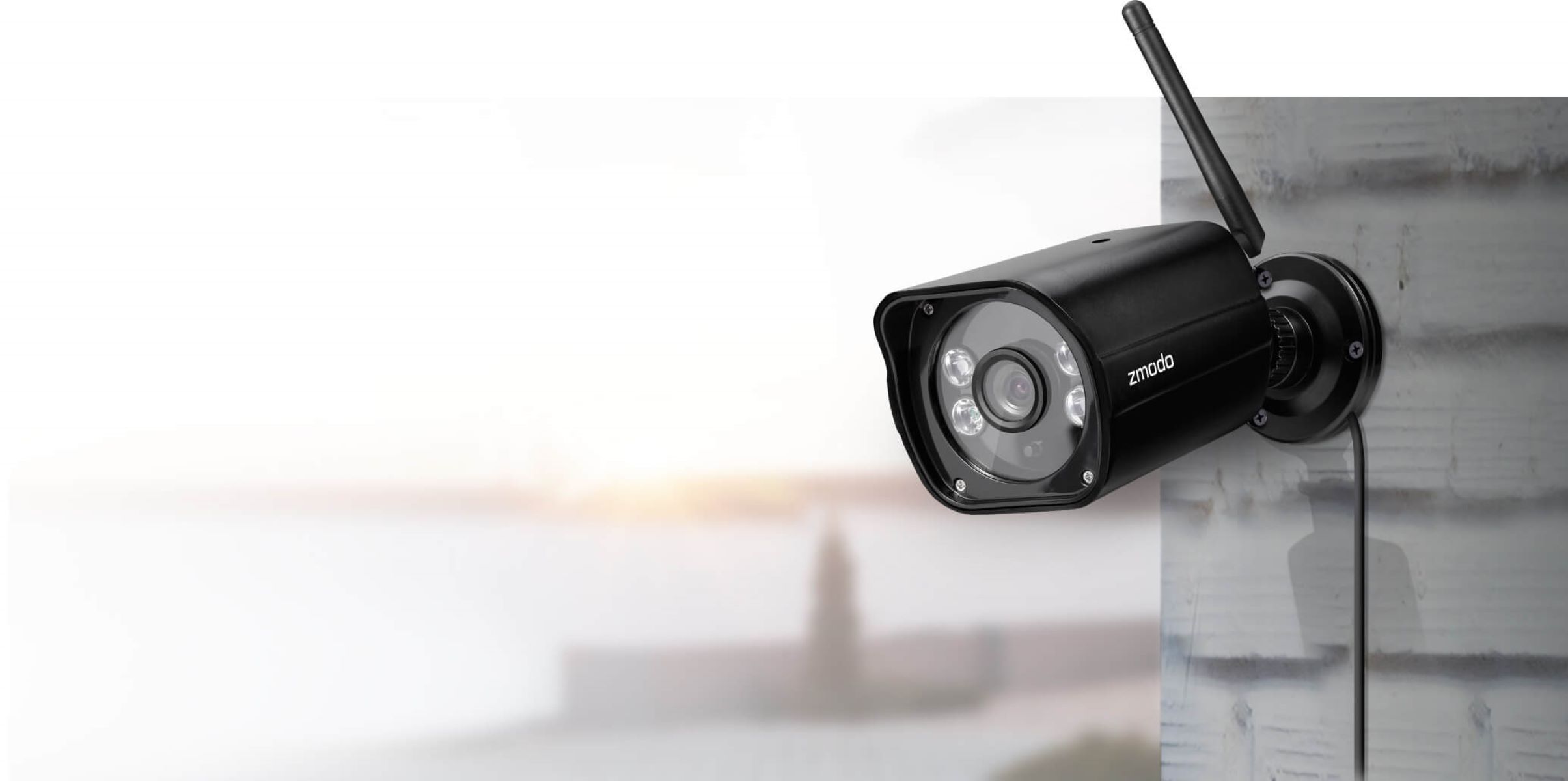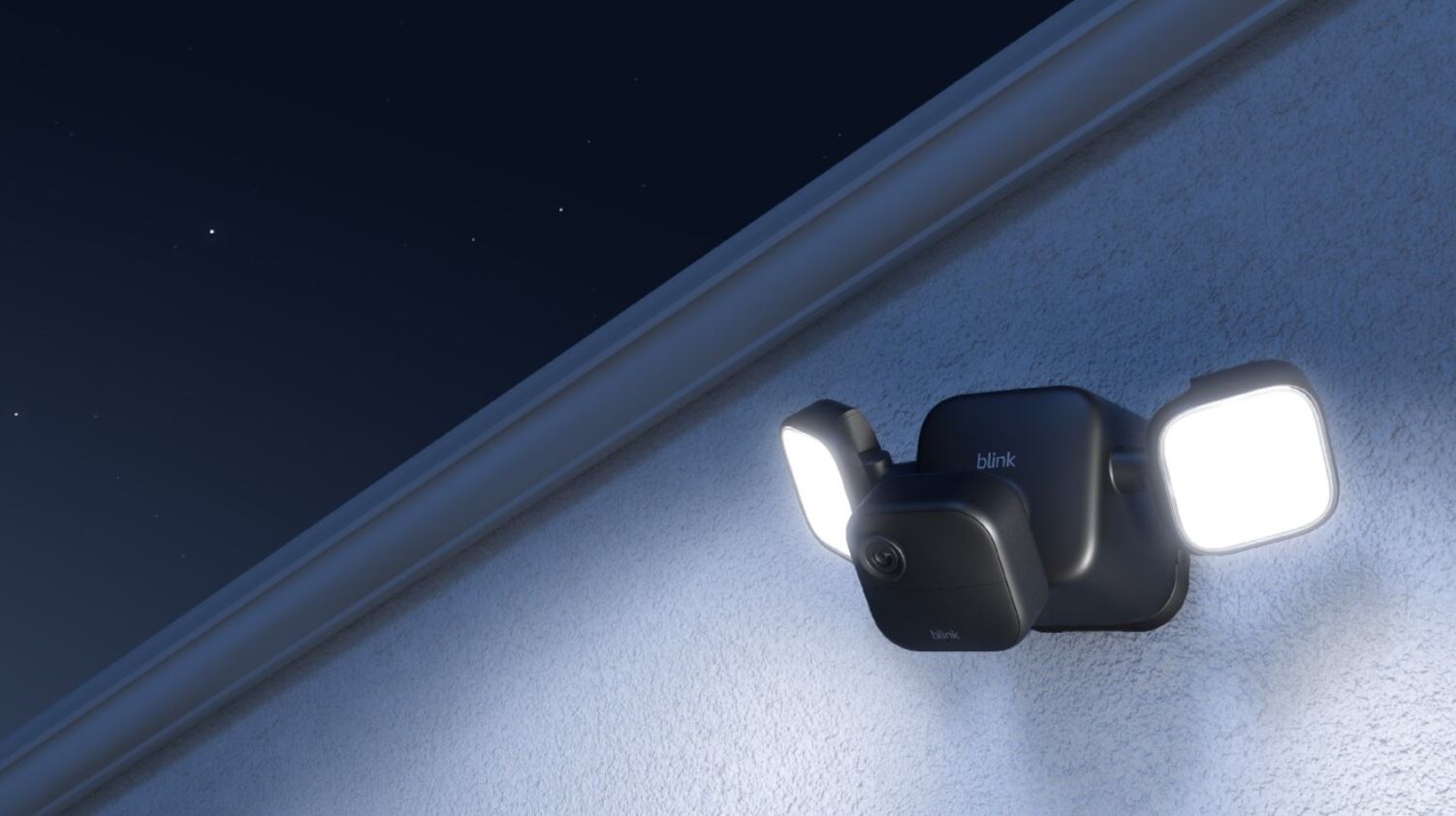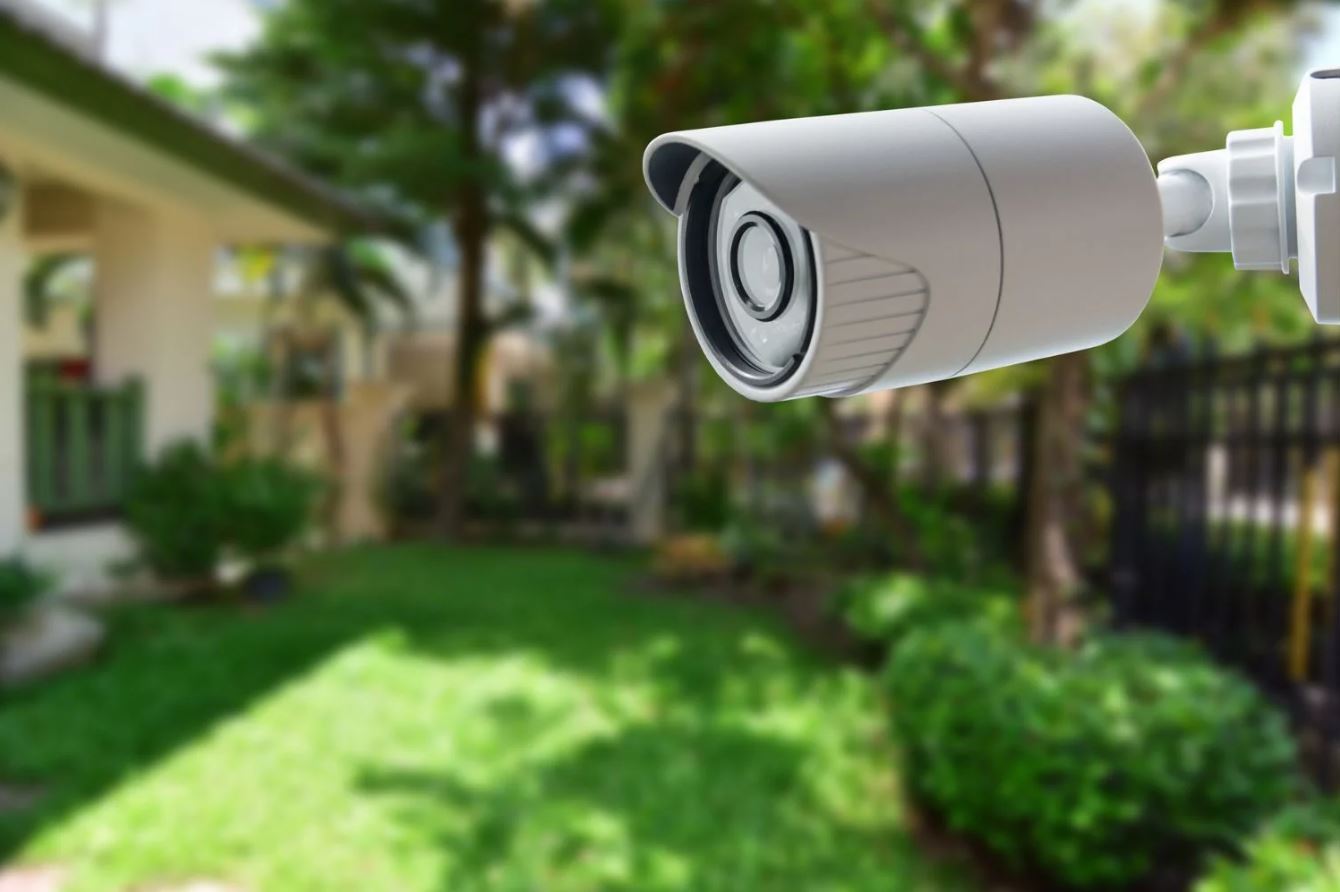Introduction
Wireless security cameras have become increasingly popular in recent years due to their convenience, flexibility, and ease of installation. These cameras provide an effective way to monitor and secure residential and commercial properties without the need for complex wiring or drilling. Whether you want to keep an eye on your home while you’re away, monitor your office premises, or ensure the safety of your retail store, wireless security cameras offer a practical solution.
Unlike traditional wired security cameras, wireless security cameras use wireless technology to transmit video and audio signals to a receiver or a connected device, such as a smartphone or computer. This technology eliminates the need for physical cables, making installation faster and more convenient.
In this article, we will explore the workings of wireless security cameras and delve into the various aspects that make them an attractive option for surveillance and monitoring purposes. We will discuss the wireless transmission, power source, security features, and the setup process for these cameras. Additionally, we will examine the advantages they offer as well as some limitations to consider when choosing wireless security cameras for your security needs.
With the advent of wireless technology, the world of security cameras has been revolutionized. Wireless security cameras are now more accessible, affordable, and easier to use than ever before. Whether you are a homeowner, business owner, or property manager, understanding how these cameras work will help you make an informed decision when it comes to choosing the right security solution for your specific needs.
What are wireless security cameras?
Wireless security cameras, also known as Wi-Fi cameras or IP cameras, are surveillance cameras that use wireless technology to transmit video and audio signals. These cameras are designed to provide real-time monitoring and recording of activities within a certain area or premises, without the need for physical cables.
Wireless security cameras come in various forms, including indoor and outdoor models, and can be easily installed and connected to existing wireless networks. They are equipped with built-in Wi-Fi capabilities, allowing them to connect to your home or office’s wireless network and transmit data to a designated receiver or a connected device, such as a smartphone, tablet, or computer.
These cameras typically have high-resolution lenses and image sensors, capturing clear and detailed footage that can be accessed and monitored remotely. With the advancements in technology, many wireless security cameras now offer features such as night vision, motion detection, two-way audio, and even facial recognition, enhancing their effectiveness as a security tool.
Wireless security cameras can be used both for residential and commercial purposes. They are commonly installed in homes to monitor the exterior areas, such as the front door, backyard, or driveway, ensuring the safety of the property and its occupants. In commercial settings, wireless security cameras are used to monitor entrances, parking lots, storage areas, and other parts of the premises to deter theft, vandalism, and unauthorized access.
One of the main advantages of wireless security cameras is their flexibility. Since they do not require physical cables, they can be easily installed and positioned in various locations without restriction. This flexibility also allows for easy relocation or repositioning of the cameras when needed.
Wireless security cameras usually come with user-friendly interfaces and mobile apps that enable remote access and control. This means that you can monitor your camera feeds and adjust settings from anywhere, as long as you have an internet connection. Some cameras even allow for cloud storage, saving your recorded footage securely in the cloud, providing a backup in case of physical damage or theft of the camera.
In the next section, we will delve into the inner workings of wireless security cameras and explore how they transmit video and audio signals wirelessly.
How do wireless security cameras work?
Wireless security cameras work by using wireless transmission technology to send video and audio signals from the camera to a receiver or a connected device. These cameras are equipped with built-in Wi-Fi capabilities, allowing them to connect to a wireless network and transmit data wirelessly.
When you set up a wireless security camera, it connects to your home or office’s Wi-Fi network using the provided credentials, just like any other device on the network. This allows the camera to establish a connection with the network router, which acts as a central hub for communication.
Once the camera is connected to the Wi-Fi network, it begins capturing video and audio footage based on the settings you have configured. The camera then compresses the data into smaller packets to optimize transmission over the wireless network.
These compressed video and audio packets are then transmitted wirelessly from the camera to the network router. The router receives the packets and forwards them to the receiver or the connected devices that have been authorized to receive the camera’s feed.
In the case of accessing the camera feed remotely using a smartphone or computer, the receiver can be a dedicated software application or web interface provided by the camera manufacturer. This receiver decodes and displays the video and audio feed in real-time, allowing you to monitor the camera’s view from wherever you are.
It’s important to ensure that both the wireless security camera and the receiver or connected device are within the range of the Wi-Fi network, as the strength and stability of the connection can affect the quality and reliability of the camera feed.
Some wireless security cameras also offer the option of cloud storage for recorded footage. This means that the camera can automatically upload the recorded video to a secure cloud server, allowing you to access and review the footage remotely. Cloud storage provides peace of mind, as it acts as a backup in case the camera is damaged or stolen.
Overall, wireless security cameras provide a convenient and efficient way to monitor and secure your property. With their wireless transmission capabilities, they offer flexibility in installation and remote access, making them an ideal choice for both residential and commercial security needs.
Wireless transmission
Wireless transmission is a crucial component of how wireless security cameras operate. It allows the cameras to send video and audio signals wirelessly to the receiver or connected device.
Wireless security cameras utilize various wireless transmission technologies, with Wi-Fi being the most common. Wi-Fi, or Wireless Fidelity, is a wireless networking technology that allows devices to connect to a local area network (LAN) without the need for physical cables.
When a wireless security camera is connected to a Wi-Fi network, it establishes a communication link with the network router. This link enables the camera to transmit the video and audio data generated by its sensors and lenses to the connected devices or receiver.
The wireless transmission process involves encoding the video and audio data into packets and sending them over the Wi-Fi network. These packets are then received by the network router, which forwards them to the appropriate destination, such as a mobile device or computer.
Wireless security cameras use specific radio frequencies to transmit data wirelessly. The most commonly used frequency range for Wi-Fi cameras is 2.4 GHz and 5 GHz. These frequencies provide adequate bandwidth to transmit a continuous video stream with good quality.
The range of wireless transmission can vary depending on factors such as the strength of the Wi-Fi signal, obstacles in the environment, and the specific capabilities of the camera. In general, most wireless security cameras have a range of around 100 to 300 feet, although this can be extended with the use of signal boosters or Wi-Fi range extenders.
It is important to ensure a stable and strong wireless connection between the camera and the receiver or connected devices. A weak or unstable connection can result in poor video quality, lag, or even disconnections. To optimize the wireless transmission, it is advisable to position the camera within the recommended range of the Wi-Fi network and ensure that there are no significant obstacles, such as thick walls or large metal objects, between the camera and the router.
Additionally, some wireless security cameras offer advanced wireless transmission features such as encryption and security protocols to protect the video and audio data from unauthorized access or interference. These security measures ensure that your camera feed remains private and secure.
In the next section, we will explore the power source options for wireless security cameras and how they can be powered without the need for physical cables.
Power source for wireless security cameras
One of the key advantages of wireless security cameras is that they can be powered without the need for physical cables. This makes them extremely versatile and easy to install in various locations. There are several options for powering wireless security cameras, depending on the specific model and requirements.
Battery-powered cameras: Some wireless security cameras are designed to be powered by batteries. These cameras are typically small and portable, making them ideal for temporary installations or areas where access to power outlets is limited. Battery-powered cameras usually require regular battery replacements or recharging, depending on the battery life and usage.
Solar-powered cameras: Another option for powering wireless security cameras is solar energy. Solar-powered cameras come with built-in solar panels that gather sunlight and convert it into electrical energy to power the camera. These cameras are especially useful for outdoor installations where access to power sources is challenging. The solar panels recharge the internal batteries of the camera, ensuring continuous operation even in areas with limited sunlight.
Plug-in power adapters: Some wireless security cameras can be powered through a standard electrical outlet using plug-in power adapters. These cameras come with power adapters that convert the AC electrical current from the outlet into DC power that the camera can use. This power source option eliminates the need for battery replacements or recharging, providing a constant and reliable power supply for the camera.
PoE (Power over Ethernet): PoE is a technology that enables both power and data transmission over a single Ethernet cable. PoE-powered security cameras can be connected directly to a PoE switch or injector, which provides power to the camera through the Ethernet cable. This eliminates the need for a separate power source and simplifies the installation process. PoE-powered cameras are commonly used in network-based surveillance systems, where multiple cameras are connected to a central network.
It is important to consider the power source options when choosing a wireless security camera and ensure that it aligns with your specific installation requirements. Factors such as the location of the camera, availability of power sources, and the desired level of convenience will influence the choice of power source.
Furthermore, it is essential to consider the battery life or power consumption of the camera, especially for battery-powered or solar-powered options. Understanding the camera’s power usage and the expected battery life will help determine the frequency of battery replacements or recharging, ensuring uninterrupted surveillance.
Now that we have explored the power source options for wireless security cameras, let’s move on to the next section, where we will discuss the various security features that these cameras offer.
Security features
Wireless security cameras are equipped with various security features to ensure the protection and integrity of the captured video footage and the privacy of the users. These features are designed to enhance the overall security of the camera system and prevent unauthorized access or tampering.
Encryption: Encryption is a vital security feature in wireless security cameras. It ensures that the video and audio data transmitted between the camera and the receiver or connected device is encrypted, making it difficult for unauthorized individuals to intercept or decode the information. Modern wireless security cameras use advanced encryption protocols, such as WPA2 (Wi-Fi Protected Access 2), to strengthen the security of the wireless transmission.
Password protection: Most wireless security cameras allow users to set up password protection for accessing the camera feed or making changes to the camera’s settings. Passwords act as an additional layer of security, preventing unauthorized individuals from gaining access to the camera’s footage or tampering with the camera’s configuration. It is essential to choose strong and unique passwords that are not easily guessable.
Two-factor authentication: Some wireless security cameras offer the option of two-factor authentication. This involves providing an additional verification method, such as a unique code sent to a mobile device or an email, when attempting to access the camera feed or make changes to the camera’s settings. Two-factor authentication adds an extra layer of security, ensuring that only authorized individuals can access the camera and its functionalities.
Motion detection and alerts: Many wireless security cameras are equipped with motion detection capabilities. These cameras use built-in sensors to detect motion within their field of view. When motion is detected, the camera can send notifications or alerts to the connected devices, such as smartphones or computers, informing the users of potential activities or intrusions. Motion detection helps to keep users informed and allows for immediate action to be taken if suspicious movement is detected.
Night vision: Night vision is an essential security feature, particularly for outdoor wireless security cameras. It enables the camera to capture clear footage in low-light or dark conditions. These cameras use infrared technology to illuminate the area being monitored, allowing for enhanced visibility during the night. Night vision ensures that the camera can provide reliable surveillance and monitoring day and night, regardless of the lighting conditions.
Privacy masking: Privacy masking is a feature that allows users to designate specific areas within the camera’s field of view where recording and monitoring are disabled. This feature is particularly useful when there are areas that need to be excluded from surveillance for privacy reasons, such as windows facing neighboring properties or personal spaces within a larger monitored area. Privacy masking ensures that sensitive areas remain private and are not recorded or monitored.
It is important to consider the security features offered by wireless security cameras when selecting a system for your surveillance needs. Understanding and utilizing these features appropriately can help enhance the security of your property and provide peace of mind knowing that your camera system is robust and protected from unauthorized access.
In the following section, we will explore the setup process for wireless security cameras and discuss the steps involved in getting your cameras up and running.
Setting up wireless security cameras
Setting up wireless security cameras may seem daunting at first, but with the right steps and guidance, it can be a straightforward process. Follow these general steps to get your wireless security cameras up and running:
1. Plan camera locations: Before you begin the setup process, determine the optimal locations for your cameras. Consider areas that require monitoring, such as entry points, driveways, or high-value areas. Ensure that the Wi-Fi signal can reach these locations, and there are no obstacles blocking the camera’s field of view.
2. Prepare the cameras: Ensure that your wireless security cameras are fully charged (if using battery-powered cameras) or have a stable power source. Check for any firmware updates, as manufacturers regularly release updates to improve camera performance and security.
3. Connect to Wi-Fi network: Follow the manufacturer’s instructions to connect the wireless security cameras to your Wi-Fi network. This usually involves scanning for available networks and entering your network’s username and password. Ensure that you choose a secure password to protect your network and camera feed from unauthorized access.
4. Install the cameras: Once your cameras are connected to the Wi-Fi network, it’s time to install them in their designated locations. Ensure that the cameras are securely mounted or placed in a position that provides optimal coverage. Adjust the camera angles and focus as needed to capture the desired areas.
5. Test the cameras and adjust settings: After installing the cameras, test their functionality by accessing the camera feed on your connected device or receiver. Ensure that the video and audio quality is satisfactory and that the cameras are capturing the desired footage. Adjust any settings or configurations, such as motion detection sensitivity or recording duration, according to your preferences.
6. Set up remote access: If desired, set up remote access to your camera feed. This can usually be done through a manufacturer-provided app or software. Ensure that you follow the recommended security guidelines, such as enabling two-factor authentication or using secure login credentials, to protect your camera feed from unauthorized access.
7. Regular maintenance and monitoring: To ensure the longevity and effectiveness of your wireless security cameras, regularly check for updates, both for the camera firmware and the associated apps or software. Additionally, periodically clean the camera lenses to maintain optimal image quality.
Remember that the setup process may vary slightly depending on the specific brand and model of your wireless security cameras. Always refer to the manufacturer’s instructions and guidelines for accurate and detailed setup instructions.
With your wireless security cameras successfully set up, you can now enjoy peace of mind, knowing that your property is being monitored and protected. The flexibility and convenience of wireless security cameras make them an ideal choice for effective surveillance and security.
In the next section, we will explore the advantages of using wireless security cameras over their wired counterparts.
Advantages of using wireless security cameras
Wireless security cameras offer a range of advantages over their wired counterparts, making them a popular choice for both residential and commercial surveillance needs. Here are some key advantages of using wireless security cameras:
1. Easy installation: One of the main advantages of wireless security cameras is the ease of installation. Unlike traditional wired cameras that require complex wiring and drilling, wireless cameras can be set up quickly and conveniently. This eliminates the need for professional installation services and reduces installation costs.
2. Flexibility and versatility: Wireless security cameras provide flexibility in terms of camera placement. Without the restrictions of cables, these cameras can be installed in various locations, both indoors and outdoors. They can be easily repositioned or moved to different areas whenever needed, without the hassle of rewiring.
3. Remote access and monitoring: Wireless security cameras typically offer remote access and monitoring capabilities. With the use of mobile apps or software, users can access their camera feeds and monitor their properties from anywhere, as long as they have an internet connection. This allows for real-time monitoring and peace of mind, even when away from home or the office.
4. Scalability: Wireless security camera systems can be easily scaled up or expanded to accommodate changing surveillance needs. Additional cameras can be added to the system without the need for extensive rewiring, making it convenient to modify and customize the camera network as required.
5. Enhanced aesthetics: Unlike wired cameras that come with visible cables and wiring, wireless security cameras offer a cleaner and more aesthetic appearance. They blend seamlessly into the surroundings without the need for unsightly cables running along walls or ceilings, maintaining the aesthetic appeal of the property.
6. Easy maintenance: Wireless security cameras generally require less maintenance compared to wired cameras. Without the need for cables, there is no risk of cable damage or wear and tear. Additionally, firmware updates and settings adjustments can be easily performed remotely, eliminating the need for physical maintenance visits.
7. Portability: Wireless security cameras, especially battery-powered or solar-powered ones, offer the advantage of portability. They can be easily moved or repositioned to different locations, making them ideal for temporary surveillance needs, construction sites, or events where monitoring is required for a limited time.
8. Integration with other smart devices: Wireless security cameras can often be integrated with other smart devices and home automation systems. This allows for enhanced functionality, such as triggering lights or sirens when motion is detected, integrating with voice assistants for voice commands, or sending notifications to smartphones or smartwatches.
Overall, wireless security cameras provide numerous advantages, from easy installation and flexibility to remote access and scalability. These advantages make wireless cameras a popular choice for those seeking effective and convenient surveillance solutions.
In the next section, we will explore some limitations and considerations to keep in mind when choosing wireless security cameras.
Limitations of wireless security cameras
While wireless security cameras offer numerous advantages, it is important to be aware of their limitations and considerations. Here are some common limitations to keep in mind when choosing wireless security cameras:
1. Potential signal interference: Wireless security cameras rely on a stable Wi-Fi signal for transmission. However, they can be susceptible to signal interference from other devices or objects, such as thick walls, appliances, or competing Wi-Fi networks. This can result in degraded video quality or intermittent connection issues.
2. Limited range: Wireless security cameras have a limited range within which they can reliably transmit data. The range can vary depending on factors such as the strength of the Wi-Fi signal, obstacles in the environment, and the specific capabilities of the camera. It is essential to ensure that the camera’s range covers the desired surveillance areas to avoid blind spots.
3. Power requirements: While wireless security cameras offer options for battery-powered or solar-powered operation, these power sources may have limitations. Battery-powered cameras require regular battery replacements or recharging, which can be inconvenient and may result in downtime if not properly managed. Solar-powered cameras require sufficient sunlight to maintain continuous operation, which can be challenging in areas with limited sun exposure.
4. Bandwidth consumption: Streaming video and audio data from wireless security cameras can consume significant bandwidth on the Wi-Fi network. This can potentially affect the performance of other devices connected to the network, particularly if multiple cameras are installed. It is important to consider the bandwidth requirements and ensure that the network can handle the data traffic from the cameras.
5. Security vulnerabilities: While wireless security cameras offer encryption and password protection, there is still the potential for security vulnerabilities. Weak or easily guessable passwords, outdated firmware, or lack of regular updates can expose the cameras to unauthorized access or hacking. It is crucial to follow best practices for securing the camera system, such as using strong passwords and regularly updating the firmware.
6. Weather limitations: Some wireless security cameras may have limitations when it comes to extreme weather conditions. Outdoor cameras need to be weatherproof to withstand rain, wind, or extreme temperatures. It is important to ensure that the cameras you choose are designed for the specific environmental conditions they will be exposed to.
7. Cost considerations: Wireless security cameras can be more expensive than their wired counterparts, especially when considering factors such as batteries, solar panels, or additional equipment required for long-range transmission. It is important to consider the budget along with the specific needs and requirements before investing in wireless security cameras.
Understanding these limitations and considerations will help you make informed decisions when selecting wireless security cameras for your surveillance needs. It is important to weigh the advantages against these limitations and choose a system that aligns with your specific requirements.
In the final section, we will summarize the key points discussed and reiterate the importance of considering these factors when choosing wireless security cameras.
Conclusion
Wireless security cameras have revolutionized the world of surveillance and monitoring, providing a convenient and effective solution for both residential and commercial properties. Their wireless transmission technology, easy installation, and flexible features make them a popular choice among users looking for a reliable security solution.
Throughout this article, we have explored the various aspects of wireless security cameras, including their definition, how they work, the advantages they offer, and the limitations to consider. We have learned that wireless security cameras use wireless transmission technology, such as Wi-Fi, to send video and audio signals to a receiver or connected device. The ease of installation, flexibility in placement, remote access and monitoring capabilities, and scalability are among the key advantages of using wireless security cameras.
However, it is important to understand the limitations of these cameras, such as potential signal interference, limited range, power requirements, security vulnerabilities, weather limitations, and cost considerations. By considering these limitations and making informed decisions, users can mitigate the challenges associated with wireless security cameras and choose the right system for their needs.
When setting up wireless security cameras, careful planning of camera locations, connecting to the Wi-Fi network, proper installation, and adjusting settings are essential. Regular maintenance, including firmware updates and cleaning, will ensure optimal camera performance and longevity.
In conclusion, wireless security cameras offer an excellent security solution that combines convenience, flexibility, and advanced technology. By understanding their functionalities, advantages, and limitations, users can make informed decisions and deploy wireless security cameras effectively to enhance the safety and security of their properties.







